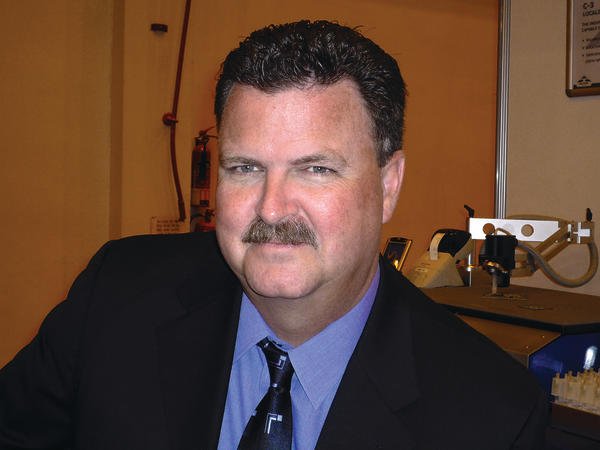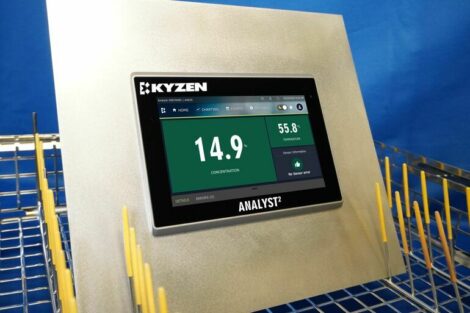While the origin of the phrase „may you live in interesting times“ is widely disputed, the fact that we do indeed live in an interesting time is certainly not. While record bank failures and declines in stock values, only rivaled by the Depression era, wreak havoc on consumer confidence, the economic trickle-down effect translates to reductions in production output and ultimately the consolidation of many industries, including electronic assembly.
In the face of budget cuts and the resulting reduction of approvals of new capital equipment requisitions, at least one industry failed to falter. The cleaning industry, specifically post-reflow defluxing and cleanliness testing equipment, experienced a surge of new business in 2008. So, one asks, who is cleaning boards? The answer is unconventional. Before the Montreal Protocol, most electronic assemblers removed the flux from assemblies. With few exceptions, all boards were cleaned after soldering. The post-Montreal-Protocol era brought no-clean flux and cleaning became the near-exclusive activity of military and a small handful of other high-reliability assemblers. They cleaned because military specifications required them to do so. The cleaning equipment market became highly specialized, with many previously familiar high-speed inline (conveyorized) defluxing equipment manufacturers either going out of business or merging with surviving companies. Lower-volume, batch-format cleaners replaced larger, faster inline models due to their suitability and efficiencies in lower-volume/higher-mix applications common in military and other high-reliability applications.
The introduction of lead-free legislation has once again rocked the cleaning industry, this time in an opposite direction. 2008 represented a banner year for many defluxing equipment manufacturers and compatible chemical suppliers. In the midst of an economic downturn, the cleaning industry actually grew. What forces were at work to cause the entire industrialized world to rethink their defluxing strategies? Well, the answer lies between two electrical components mounted on a circuit board. It is a small metal crystal called a dendrite; a dendrite being a metal crystal that can grow between two electrical points on a circuit board. Because the dendrite is comprised of metal it conducts electricity. Unwanted electrical conductivity on a board between two undesired locations can easily cause a board to fail. A board failure in a cruise missile produces obvious detrimental repercussions, hence the cleaning requirement. But dendrites know no application-based boundaries. Fact is, it only takes three basic ingredients to produce a dendrite: voltage, corrosive material and moisture.
Dendrites grow on a board by way of a plating process, whereby a conductive and corrosive residue (flux) provides a current path between a cathode and an anode. Voltage travels along the new, unintentional current path and the dendrites begin to grow. While it only takes three basic ingredients to grow a dendrite, there are two other factors that aid and abet the dendrite. One is the ever-decreasing distance between the cathode and the anode. We call this miniaturization. Perhaps no other industry is better known for miniaturization than the electronics industry. The other contributing factor is lead-free solder alloys which require higher reflow temperatures compared to eutectic alloys.
Combine higher reflow temperatures and very-low-solid fluxes and what do you have? You have flux that polymerizes too soon in the reflow process, preventing the encapsulation of metal salts created when metal turns to liquid. Unlike traditional high-solids-content rosin fluxes that capture and encapsulate the metal salts, low-solids no-clean fluxes, when combined with higher heat, can harden, preventing the encapsulation of metal salts. These free metal salts become fertilizer for dendrites. How can one prevent dendritic growth? The answer is painfully simple. There are three potential methods:
- Remove voltage from the board. Yes, I’m being facetious.
- Prevent contact with moisture and/or humidity. This can be accomplished by either controlling the board’s environment or conformal coating the board.
- Remove the conductive residue (flux).
I’ll pick door number three, and so did much of the electronic assembly industry. In just the past few years, more assemblers began to clean their assemblies after reflow to remove flux and other conductive residues picked up in board fabrication, from components, and during the assembly process. Because defluxing is new again, there is a newfound desire among engineers to learn more about modern defluxing alternatives. Board failures, due to the lack of proper post-reflow cleaning are no longer exclusively the problem of super-high-reliability manufacturers. With cleaning once again part of the EMS vernacular, suppliers of cleaning equipment and chemicals have provided manufacturers with suitable choices to match any cleanliness, throughput and environmental requirement. With fewer field failures and increased reliability, perhaps our time can be a little less interesting.
EPPE 407
zusammenfassung
Reinigung ist in der Elektronik ausschlaggebend für effiziente und qualitätshohe Produktion. Neben der Umstellung auf bleifrei gibt es weitere Faktoren, die beondere Aufmerksamkeit erfordert. Drei potenzielle Methoden zur Vermeidung eventueller Ausfälle werden detailliert mit ihren Vorteilen vorgestellt.
La nettoyage des composants électroniques est nécessaire pour une production efficace et de qualité élevée. Outre l’interdiction du plomb, plusieurs facteurs rendent le nettoyage nécessaire. Nous vous présenterons en détail trois méthodes potentielles, ainsi que leurs avantages spécifiques, visant à éviter la production d’éventuels déchets.
Share:










